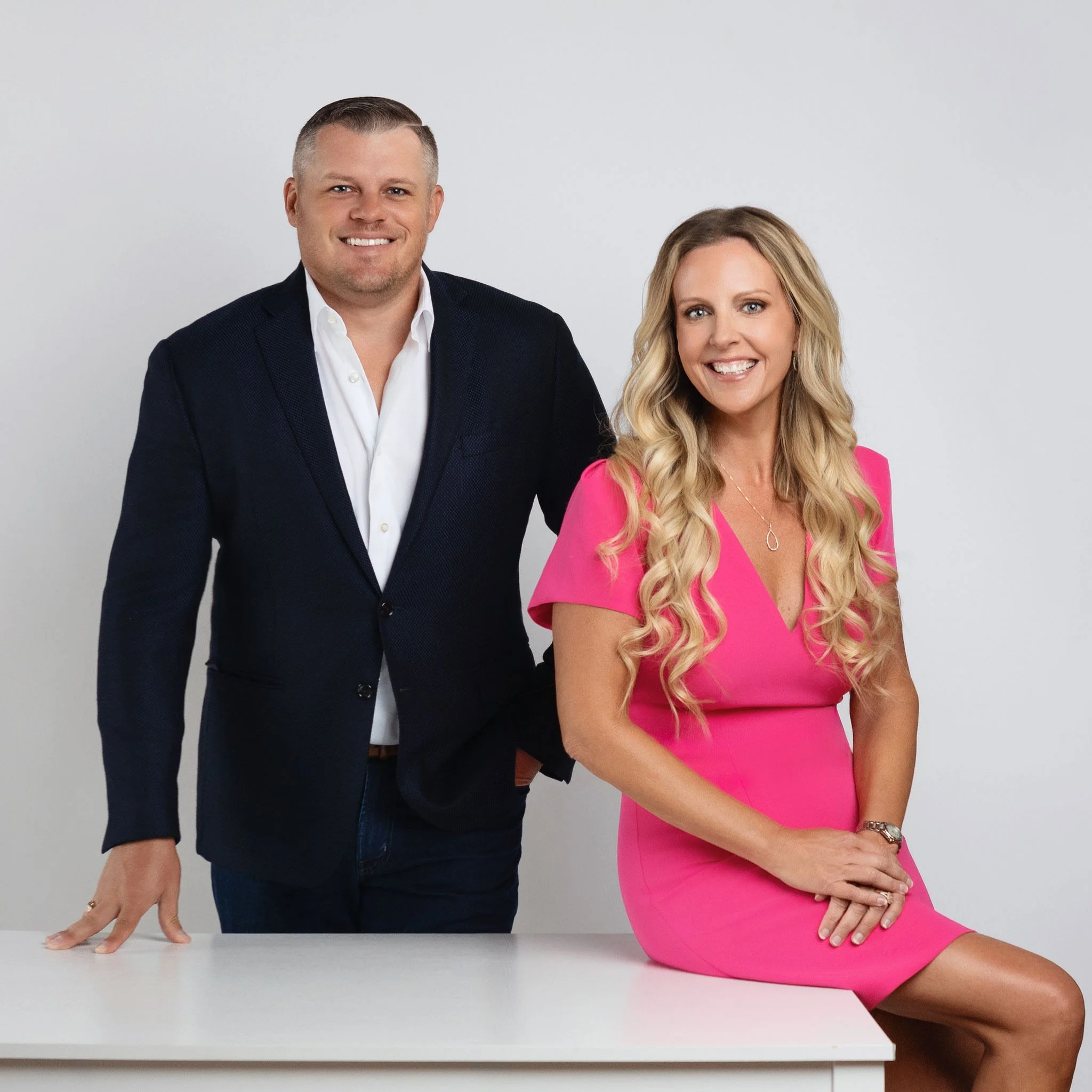Business Planning: Navigating the Early Stages of Business Growth
/Growing a small business is challenging, so here are some expert planning tips to guide you.
Small-businesses and start-ups range widely in their problems, patterns, and journey, and categorizing those experiences in a meaningful and useful way can be challenging. Yet, despite the uniqueness of their process, almost all entrepreneurs share a similar set of responsibilities. While timeframes, product complexity, organizational structures, and strategic goals vary, every entrepreneur faces at least three core responsibilities for their business: Survival, growth, and direction. These shared responsibilities occur continuously, simultaneously, and yet sequentially, since only if/once successfully managing one can the others be effectively addressed. Therefore, these ongoing activities might also might be considered as three cyclical stages of progress that all small-business owners face.
This article will discuss three core questions that any business owner should be able to answer clearly, concisely, and specifically at any stage if they want to navigate the difficult cycles of growth.
1. Survival: Building a strong foundation as a small-business
Survival, the most basic necessity as a small-business, isn’t a question of, “are you currently operating,” but rather, “are you currently operating in a way that will enable you to continue to survive?” Answering the first question is a simple yes or no, but answering the second is more complex. Each business faces its own unique combination of challenges and problems to solve as it evolves towards growth and into its long-term direction, and each has its own unique answers for solving them. However, some of the inevitable challenges can be anticipated and prepared for by being aware of our needs and asking the right questions before they begin to cost us.
At a bare minimum, the Survival stage of a small-business involves creating customers, meeting essential costs, and establishing financial and operational stability. At this stage there are rarely well-defined management processes, diverse internal technologies, or excess resources. The most important question to ensure continued survival is:
Can we get enough customers and deliver our products or services well enough to remain a viable business?
Peter Drucker, one of the most preeminent business philosophers and authors of all time once wrote, “Because the purpose of business is to create a customer, the business enterprise has two - and only two - basic functions: marketing and innovation… Marketing and innovation produce results; all the rest are costs. Marketing is the distinguishing, unique function of the business.”
Answering the question above includes several considerations like:
Based on my current resources and total income, how much revenue do I need to generate to cover my expenses and leave sufficient personal and business capital on a 3-month, 6-month, and 12-month horizon?
Based on my Average Order Value, approximately how many new customers does this mean I need to generate month by month?
What business development and marketing processes will I rely on to consistently produce new customers?
Who is my ideal customer?
What channels will I use to reach new customers? (Referrals? Social media? Paid search? Distribution partnerships? Events? Outbound sales?)
How will I craft a compelling brand/message that attracts customers?
Based on my chosen channels and marketing/advertising spend, what is my approximate cost per acquisition?
Do I even have a reliable system for consistently attracting new customers or am I relying on factors outside my control? (e.g., passive referrals, organic interest, etc.,)
Based on escalating demand over the projected periods of time, what fulfillment processes, resources (including people), or technologies will be necessary at each stage to successfully deliver my product or service?
If my customer base expands by 5%, 10%, 25%, 50%, will I be able to satisfy demand without sacrificing quality?
At what point will I need to hire?
At what point will I require new technology or resources?
What processes, procedures, and policies are needed to ensure quality and scalability internally?
The most basic priorities for a business to survive primarily stem from creating enough customers and consequent revenue/capital to sufficiently cover expenses and continue delivering your product or service. Profitability is achieved when the Cost of Acquisition (CPA) and Delivered Cost (DC - adjusted for services-based businesses) becomes less than the Lifetime Value (LTV) of a customer. As efficiency increases, ideal channels and segments are determined, messages and marketing refined, and delivery processes improved, it becomes cheaper to gain customers, quicker to deliver products/services, and easier to manage activities. As the organization’s maturity and customer base increases, the entrepreneur’s attention can shift from scrambling to survive towards maintaining steady growth.
2. Growth: Scaling successfully and sustainably
Organizational growth takes many forms. An organization can grow laterally, expanding its product or service offering to serve new niches and segments of the market while broadening the diversity of its revenue streams - or it could grow vertically, deepening and building upon the quality, authority, and specificity of its solution to dominate a particular niche or need. While the direction of the organization will ultimately influence how it grows, its growth in any direction or form is predicated primarily on one overarching theme: its ability to serve its more its customers better.
How can we deepen our understanding of our customer and expand our solution to better serve more people without compromising the core stability, value proposition, or purpose of the organization?
This question implies three tasks: 1) Deepening our understanding of the customer, 2) Expanding our solution to better serve more people, and 3) To do so without compromising stability, value proposition, or purpose.
The more we understand about the customer, the more efficiently and effectively we can communicate with them. Assuming our solution is valuable to some segment of people to some degree, the better our understanding of who they are, what they want, and how they want it, the more precisely we can target them with the right marketing (the right message delivered to the right person at the right time through the right channel). The late, great Peter Drucker also said, “The aim of marketing is to know and understand the customer so well the product or service fits him [or her] and sells itself.” Once we have an established product or service, the surest and quickest route to growth is effective marketing, and understanding the customer is the foundation for effective marketing and expansion.
Expanding your solution to better serve more people can be accomplished in numerous ways. This could include adding product features or services, improving processes or functionalities, creating separate related products, integrating with other solutions, and more. In a noisy, crowded, and ever-evolving market, marketing can only carry you so far for so long. As you reach more of the fringes of your target market, customers’ needs and preferences will differ in nature, specificity, and degree, and your product or service must evolve with the market. Growth is a function of how much value you can create for others, and this requires that you not only reach more “others”, but create more value as well.
Yet, despite the excitement of progress, growth can be as fragile as survival and comes fraught with its own potential pitfalls. Countless companies have sacrificed health for speed in pursuit of progress, compromised the core of the organization, and paid heavily for it - often with the fate of the business. As a business matures and becomes more sophisticated, new variables are introduced and it is more critical than ever that the business leader be aware of vulnerabilities and not jeopardize progress and success by allowing dangerous risks or threats to be masked by forward momentum and positive feelings. Some problems only become more complex and difficult to deal with over time, and can culminate in disaster at crucial moments.
3. Direction: Value Proposition and Vision
Two things are key to determining the identity and direction of the organization: Value proposition (the business’s present-tense identity in relation to its customers), and its vision (the future-tense potential value the leader envisions the business fulfilling). The vision shapes the high-level strategy that guides the company’s growth, and the value proposition grounds that vision in a practical understanding of the customer/market. A value proposition without vision risks stagnation, and a vision without a value proposition risks failing. The core question in shaping a viable direction is:
What is the best way to fulfill the short-term, mid-term, and long-term value proposition and vision for this organization?
To clarify terms, value proposition is your brand and product’s unique set of core differentiating factor(s) that its target audience perceives as valuable. Vision, on the other hand, might be defined as the mid to long-term role the owner envisions the business playing both personally and in the market. The vision informs the evolution of the value proposition, and the value proposition informs the development of the vision. Whereas the value proposition emphasizes the desires of the customer, the vision reflects the desires of the entrepreneur.
Value proposition represents the very heart of an organization; it is the reasoned justification for why that business deserves to exist and should be defined not by what the business owner thinks it is, but by what customer behavior and understanding indicates it to be. A value proposition is not decided, it is born and discovered from the nature of the organization. The true value proposition is not the value that a business promises, but the value that the customer perceives, and as such is a compass to guide and ground decision-making in what is most important. It is the identity which customers perceive, and it is the sacred responsibility of the entrepreneur to safeguard the value proposition and protect the organization from decisions that might threaten to compromise the core of what makes it successful.
While most of the questions and ideas above focus on planning the path forward from where the business is currently at, articulating the vision for the organization is a chance to plan backwards from the destination you want to reach. The vision of an organization and what it wants to achieve provides a target against which we can measure and assess the trajectory and efficacy of our current activities. Value proposition is present-tense, but vision should account for how the owner envisions the organization’s value proposition evolving over time.
Meeting demands and driving growth can quickly and easily consume the entrepreneur’s attention and distract from critical long-term planning that may determine the organization’s future. It is the leader’s constant responsibility to not just react to mounting demands, but proactively direct those activities in the most strategic way possible. As growth occurs, the organization will inevitably change and adapt according to the market and its needs, and the leader must be vigilant to ensure these changes don’t contradict the core of the organization’s value proposition, or move it further from its ultimate vision.
Need help planning your business’s future?
Creating a thorough, effective plan for your business can be difficult, especially without third-party insight to protect against blind-spots, and faulty ideas and perceptions. A strong business plan should be simple and specific in its answers, but sophisticated in the process of asking all the right questions and answering them. At Prior Business Consulting, we provide a premier business coaching service that allows small business owners to make the most educated decisions possible. We provide our clients with measurable growth plans with detailed strategy and implementation techniques. We give you a road map with a timeline to achieve your revenue and profit goals. We know that every business is unique, even in the same industry. Contact us today to see how hiring a business coach can remove the roadblocks stopping your business from unleashing its full potential.





